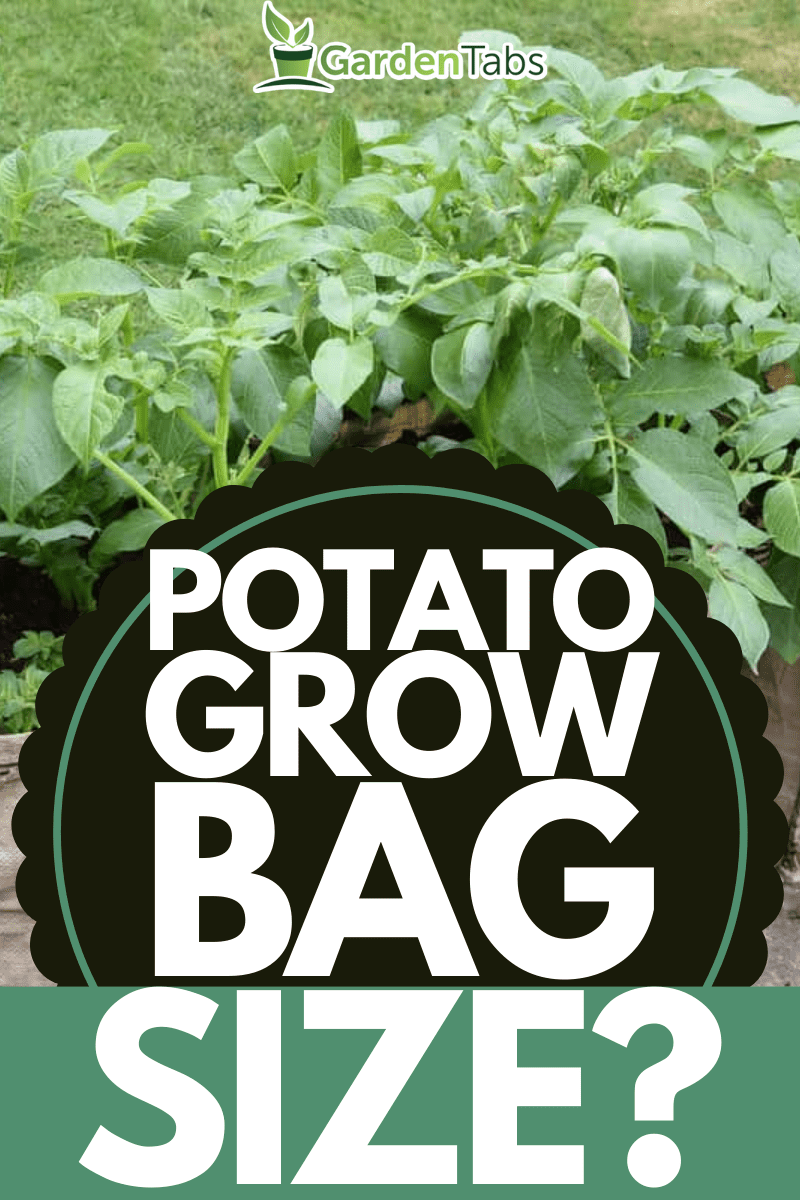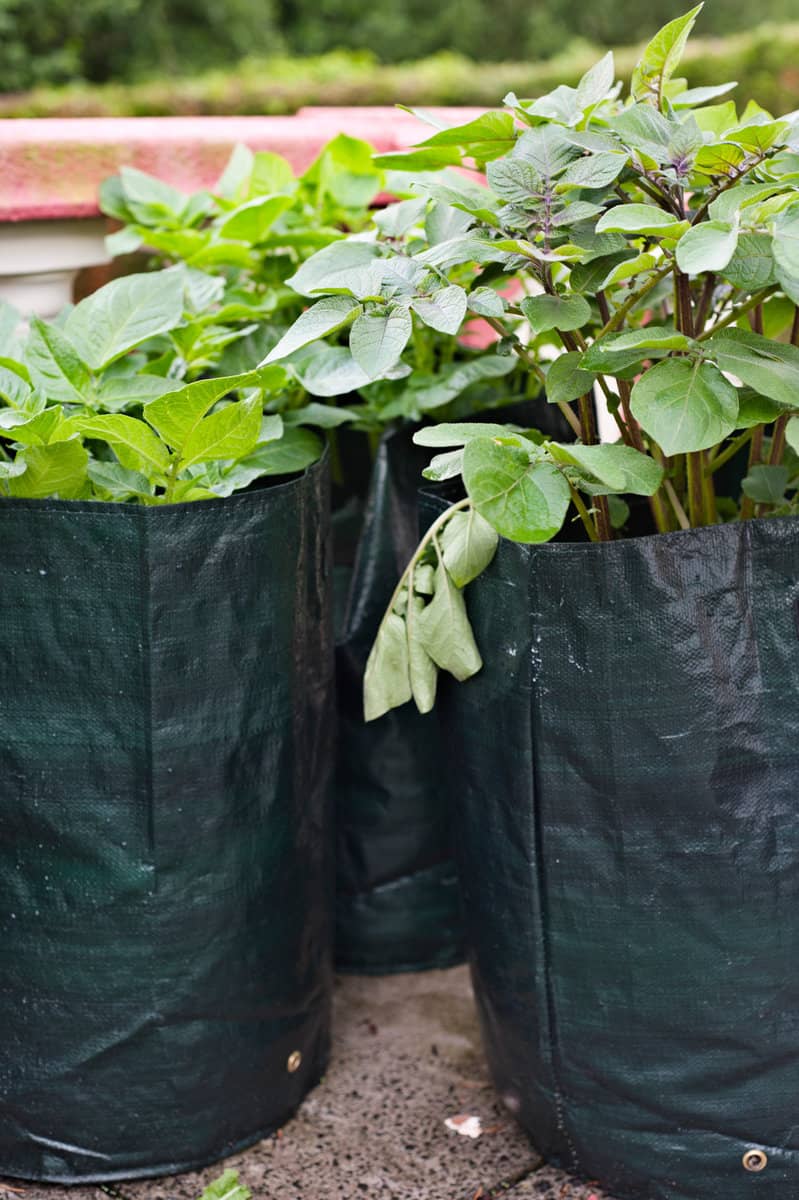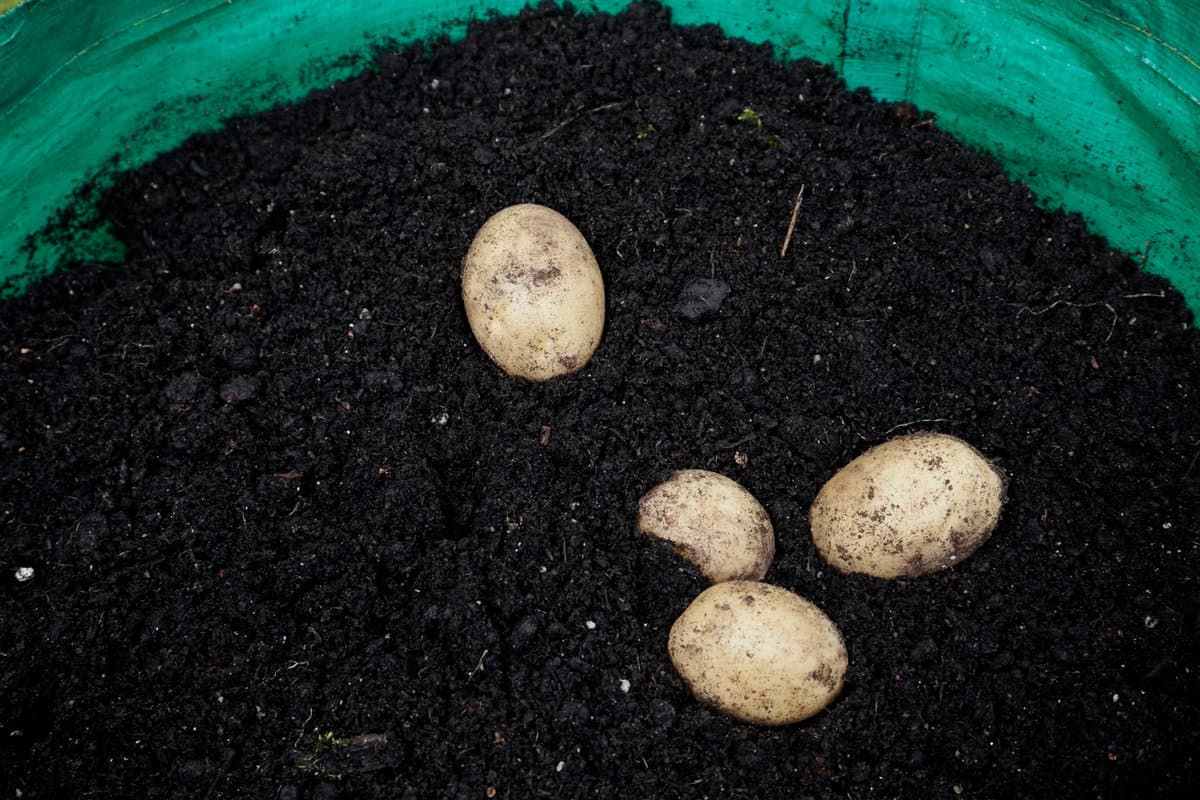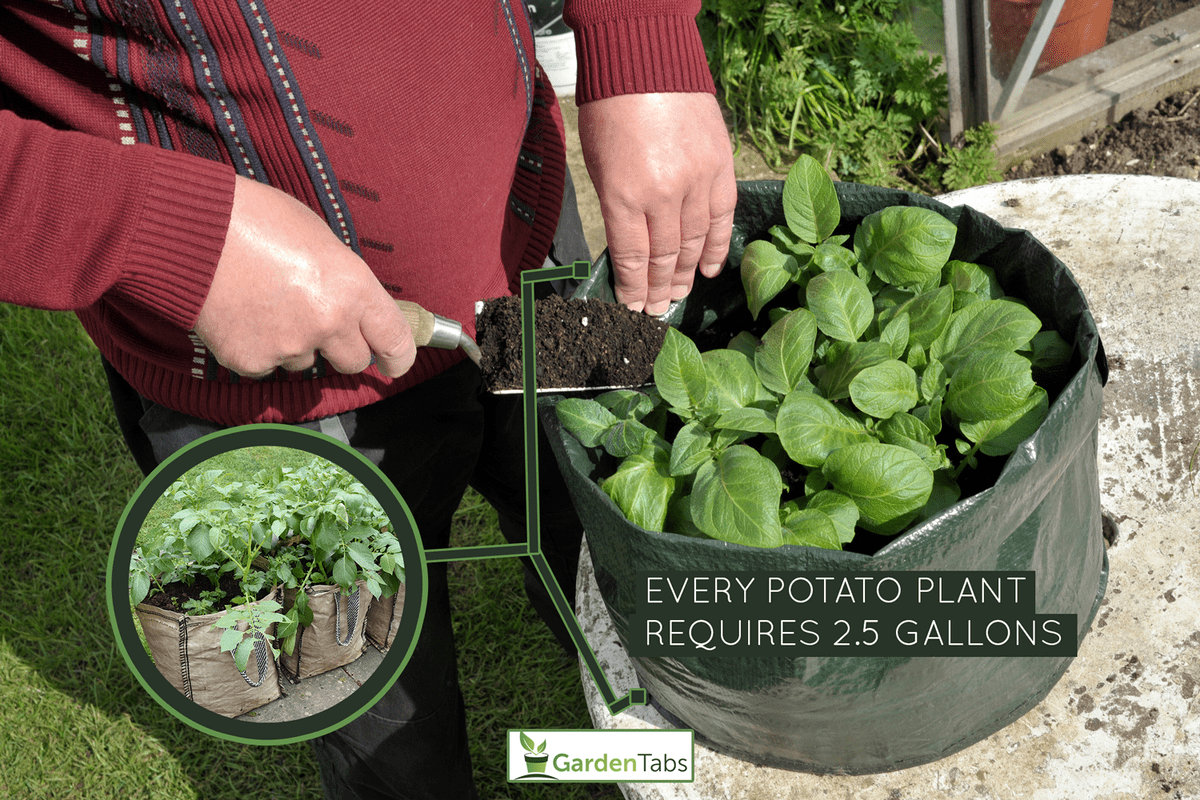The capacity of the bag is one of the most crucial elements of potato grow bags, which come in a variety of sizes and shapes. Confused about what size of grow bag to use for your potatoes? You are lucky! We’ve done thorough research to help you in this matter.
Grow bags are available in many sizes as 10-gallon bags are the most common. However, the general rule is that every potato plant requires 2.5 gallons, enough for this plant to grow vigorously.
This post covers everything you need to know about potatoes in bags. There are also instructions for growing potatoes in bags and the pros and cons of using these grow bags. So hold on as we dive into this information!

A Potato Grow Bag: What Is It?

The potato is a beloved and adaptable food that is simple and affordable to grow. In order to encourage potatoes to grow many roots and many tubers, home gardeners traditionally "hill" them.
However, there is a chance that you won't get all the potatoes out of the ground when you harvest using this hill method, which takes up some space. In this case, potato grow bags are a fantastic option. You can either make your potato bags or buy them.
A potato grow bag is a cloth- or plastic-based container in which crops can be grown. The bag offers adequate room for both a thick layer of soil and enough room for produce to develop its roots.


Click here to see this potato grow bag on Amazon.
To make it simple to harvest potatoes when they are ready, these bags often have a transparent flap. The lifespan of a potato grow bag might vary significantly depending on its composition and level of quality.
The lifespan of the potato grow bag might range from 5 to 10 years if it is composed of more durable material, such as PE or plastic. Although the name of the bag implies it to be used for growing potatoes, you may even grow a different crop in it like onions, tomatoes, and carrots. Also, it is reusable each season.
The lifespan will be substantially shorter if a potato grow bag is a biodegradable material, such as felt or cotton. They typically persist for two to three seasons. This is due to the fact that the material used to make the potato grow bag is softer and may be more challenging to maintain and clean during inclement weather.
What Are You Needed In Growing Potatoes In A Bag?
Following are the things that you will need before you begin learning how to produce potatoes in a bag.
Bags
Bags need good drainage. So when using recycled plastic bags, do ensure that you cut lots of extra holes in the bottom. It is also important that the sides must keep out light — black bags work best.
If any light leaks through, hold them up to the light and try doubling them up or line the bags with several sheets of newspaper. As an alternative, get a potato bag that is specifically made for the job. Even some cultivars include a flap so you can check on your potatoes as they grow.
The quantity of chitted potatoes required varies according to the size of the bag that will be used. The size is normally given in gallons. Typically, each potato plant requires roughly 2.5 gallons.
As a result, a 10-gallon bag can hold four potatoes whereas a 5-gallon bag can hold two potato plants. 10-gallon bags are the most common size for growing potatoes. Before purchasing, it is important to consider the potato grow bag's size to avoid unnecessary inconvenience.


Click here to see this 10 gallons grow bag on Amazon.
Chitted Seed Potatoes
Your potatoes' growth will be sped up by chitting them. Place the seed potatoes in egg boxes and stand them up in a bright, cool location that is free from frost.

Light is essential, therefore the best places for your potatoes to chit are outside in a glass greenhouse or on a windowsill on a porch. Keep an eye on your potatoes while they chit and wait (4-6 weeks) for strong, short green shoots to emerge from each tuber's eyes that are around 1 inch long.
Pull out all except three or four of the shoots at the upper end of the tuber before planting out if you want to optimize the size of your potatoes. If you leave all the shoots intact, you will end up with lots of little potatoes. As the shoots appear, they are prepared for planting.
Soil
You should consider the soil when figuring out how to cultivate potatoes in a bag. Potatoes thrive in well-drained, light, deep, loose soil, and are abundant in organic matter. Additionally, potato plants perform best in acidic soil with a pH of 4.8-5.5.


Click here to see this compost on Amazon.
How To Grow Potatoes In A Bag?

One of the finest methods for producing your own potatoes, both in terms of simplicity and adaptability, is learning how to grow them in a bag. So here are the steps to guide you:
- Once you have a bag for your potatoes, fill it about two-thirds of the way full of multi-purpose compost, then lightly compact it.
- On the surface, arrange chitted seed potatoes 8-12 inches apart.
- From this point on, you should thoroughly immerse your compost and give it enough time to drain.
- Add more compost enough to cover the tubers if the watering exposed them.
- Place the bag in a well-lit area free from frost, water it frequently, and wait for the potatoes to sprout.
- As the sprouted potato greens emerge, cover them with a compost mixture and keep the soil mixture equally moist.
- Keep them covered and unroll the burlap (if possible) as the soil level rises
- Allow the plants to blossom and die back before emptying the contents of the bag once the soil reaches the top so you can pick through and collect all the potatoes.
What Are The Pros And Cons Of Using Grow Bags?

Below are a few lists of pros and cons in great detail to help you decide if grow bags are the best option for you and will help you to optimize your harvest.
Pros
Easy Storage
Grow bags are really simple to store. Unlike pots that are stacked together, they are simple to wash, fold, and store until the following planting seasons. A grow bag doesn't take up much space in storage and you can maintain it in a dry place until it is needed again.
Plant Root Breathability
When grown in a pot, plant roots sometimes develop in circular patterns and tangle, which may influence the water saturation, especially in pots with poor drainage. This can have an impact on the plant's structure and cause the seed to stretch.
Grow bags effectively address this problem by allowing the roots to expand more freely and breathe more easily. As a result, your plants will grow more energetically and healthily.
Grow bags are naturally porous, which makes them "breathable," meaning that they are equally effective at absorbing and dispersing heat, which might lessen some of the heat that may be bearing down on your plants.
Excellent Drainage
Grow bags' porous construction offers excellent drainage. Small holes in the fabric allow for the passage of water, air, and particulates. So long as the soil mixture is well-draining, whatever water you pour through will drain effectively.
This will help both novice gardeners and experienced ones, as novice gardeners frequently overwater their plants. While overwatering a plant in a grow bag is still feasible, it is far more challenging than in other containers.
Regulates Plant Temperature
When kept in direct sunlight, plants in plastic pots could become quite warm. However, grow bags are different since they are breathable.
Grow bags keep the plants warm in the winter and cool in the summer by controlling the temperature due to the nonwoven fabric used for the majority of them.
Cons
Root Disturbance
Grow bags are movable, but this can end up disrupting the plant's root structure, which could result in a poor yield at the end of the growing season.
Frequent Watering
Another drawback of using a grow bag is that you must water it more often than with other methods. This is because when the sun is out and the temperature is high, the soil tends to dry out quickly.
Your plants will dry out if you don't water them frequently, which could be quite a hassle. Utilizing a drip irrigation system or a bottle watering system is the best course of action in situations like this.
Insect Attraction
With increased watering comes the issue of increased insect attraction, particularly mosquitoes, and since these are primarily used for growing food plants, there are few safe insect control products available.
Ripping Tendency
Even though many grow bags are produced from high-quality materials, you could, unfortunately, get grow bags that rip when put under pressure. The handles on some are shoddily sewn and could snap under stress.
When filled with soil, bags that hold more than 50 gallons become quite heavy and may even burst. A plentiful yield could be lost if certain grow bags don't withstand the entire growing season.

Conclusion

You can avoid all the digging, mulching, and hilling involved in conventional potato farming by using potato grow bags. Growing potatoes in bags save a lot of space because you don't need a garden or allotment. Instead, grow-sacks and bags may be placed on patios, decks, and concreted surfaces. They are also simple to plant and maintain.
You'll quickly be on your way to harvesting a delicious crop of potatoes if you pair the above instructions on how to grow potatoes in a bag with the right size of grow bags.
Please check out some valuable posts below.
